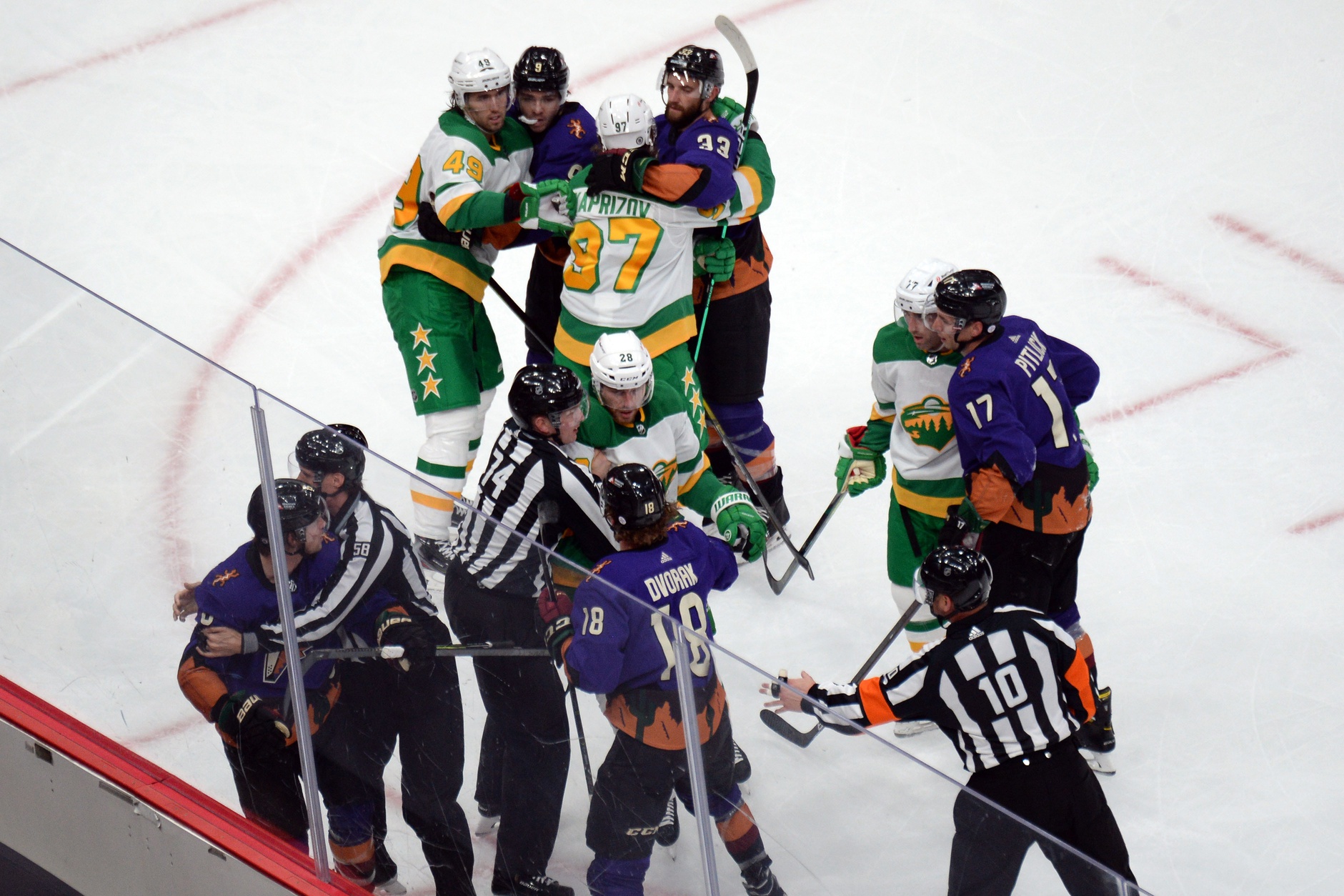
What was supposed to be a necessary adjustment to the schedule as the NHL navigated the pandemic this season might have some unintended benefits. With Canada maintaining tighter control of its borders than the United States — they essentially barred regular travel for the 24 American teams into the country and the seven Canadian teams out of it — the league needed a quick, temporary solution to satisfy the owners' and players' conditions for playing out the season.
While playing the games themselves have produced some less-than-ideal circumstances, the format surrounding those games is anything but. Commissioner Gary Bettman said this week that the divisional alignment will likely be returning to normal next season, which is excellent news for the Minnesota Wild. But should any of these changes be made permanent?
Holy In-Division Matchups, Batman!
The Wild will play every game against a divisional opponent this season, which hasn’t been great for fans. Aside from the St. Louis Blues, every other team in the Honda West Division plays at least one time zone away, and games against all three California teams regularly have start times of 9 p.m. CT.
This arrangement isn’t practical long-term, but it’s a good thing right now. The NHL needs more invested fans on a nightly basis as they attempt to expand the game's reach. Minnesota needs fewer games against teams like the Florida Panthers and Columbus Blue Jackets in the middle of the season. People are more likely to tune in to division matchups to determine if they will qualify for the playoffs and who they will play.
Before the 2019-20 season was shut down, Minnesota was scheduled to play 26 of its 82 games (31%) against Central Division opponents. They were scheduled to play 24 games against the rest of the Western Conference, 29% of the total schedule. That leaves the last 32 games, or 40%, to be played against the Eastern Conference, and these games are fundamentally less consequential.
The NHL wouldn't eliminate games between East and West, as they often are good barometers of what teams are truly great. Plus, in a hockey-centric market like Minnesota, what fans don’t want to see the likes of Sidney Crosby, Auston Matthews, and Alex Ovechkin play against the Wild? But every game this season has been intense because of the current arrangement.
Even when they go back to an 82-game schedule next year, the NHL should increase the number of games against divisional opponents. This could very easily follow Major League Baseball’s interleague format. For example, say the Pacific division links with the Metropolitan, and the Central plays the Atlantic next season. Each team should play each other twice between those two divisions for 16 games. Switch between divisions every other year so that fans still see star players in the other conference.
Make It A Series
Scheduling consecutive games against the same opponent like MLB and college hockey leagues do has done wonders to make each game appointment viewing. A team loses on the first night, and it’s fresh in their minds two nights later. For example, the Wild lost its six-game winning streak to the Vegas Golden Knights earlier this month. A few nights later, when the Golden Knights came to St. Paul got revenge with a sweep of their own.
These consecutive games help form and reinforce meaningful rivalries. This year, the Wild find themselves in physical matchups with teams like the Arizona Coyotes and Vegas in 2021. If there is divisional stability beyond this season, there is no reason to believe these rivalries won't continue to develop this way with a series-based schedule.
With less travel, players could be better rested and able to perform well throughout the year. And teams flying to cities multiple times in a season makes little sense for just about everyone involved. For example, the Colorado Avalanche was scheduled to visit Minnesota three separate times in the 2019-20 season. In turn, the Wild were to fly to Nashville and back three times that season. Compacting those games into one trip can save the league plenty of money in the long run.
Back in the Northwest Division days, none of the Wild’s divisional opponents played in the Central time zone. They all involved flights to Colorado or Western Canada, putting more air miles on the players than teams in the geographically tight-knit East. Minnesota isn't going to create meaningful rivalries with most of the West Division. But when they go back to the Central Division next year, they will be able to resume their heated battles with the Winnipeg Jets and Chicago Blackhawks.
While this season was always going to be unique for the NHL, the league needs to carefully consider some of the new schedule's benefits. Going forward, it could help teams recover financially from the pandemic, expand interest in each team, and help grow the game of hockey.
Think you could write a story like this? Hockey Wilderness wants you to develop your voice, find an audience, and we'll pay you to do it. Just fill out this form.







Recommended Comments
There are no comments to display.
Join the conversation
You can post now and register later. If you have an account, sign in now to post with your account.
Note: Your post will require moderator approval before it will be visible.